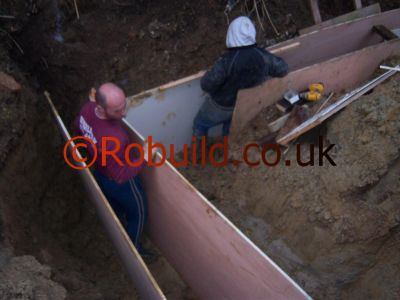Concrete usually conjures up impressions of towering skyscrapers and similar giant constructions, but the very qualities that make concrete so valuable in large scale projects are just as useful to the any builder for home improvements. The durability of concrete is only one of its qualities. In terms of weather resistance it is virtually indestructible, and it is impervious to most kinds of chemical attack. But concrete’s greatest asset is its versatility. Its range of uses includes drives, garages, paths, fencing, patios, walls and even complete buildings. And all can be produced in a wide range of coloured, textured and profiled finishes for infinite variety.
Composition of concrete
Concrete is made from cement, aggregate (sand, gravel, pebbles, crushed stone) and water in varying proportions. Sand is described as ‘fine aggregate’ and should be the ‘sharp’ variety, as distinct from the ‘soft’ bricklayer’s sand used in bricklaying mortar. Gravel, pebbles and crushed stone are described as ‘coarse aggregate’, and consist of particles varying in size between 5mm and 19mm. The cement most often used is Portland, which is light grey in colour. Also popular is white cement, which can be used on its own or with a colourant to provide a wide range of colours.
There are also many cements of a more specialised nature, such as quick setting cement, and masonry cement, which sets slowly and is used for certain types of brickwork.
Laying a concrete slab
A concrete floor slab-cast on site, without digging foundations-is a straightforward job even for the inexperienced. The technique is the same whether you are laying a drive, a path, or a foundation for a small building. You begin with a mould formed by laying planks or other sheets of timber (the form work) round the edges of the area to be concreted. The formwork is held in place by stakes driven into the ground, and protruding up to the top of the formwork. The interior of the mould or formwork is then filled with a concrete mix that is allowed to set before the timber is removed. The choice of materials for formwork is dictated by the shape of the concrete slab required. If the edges are to be straight, or angular, as is usually the case with drives and foundations for buildings, the formwork can be laid in simple timber planking.

But if curved edges are required, and for paths this usually gives a more pleasing outline then the formwork will consist of strips of flexible plywood, or even hardboard that can be pegged into a curved shape. Concrete should not be laid in frosty weather.
